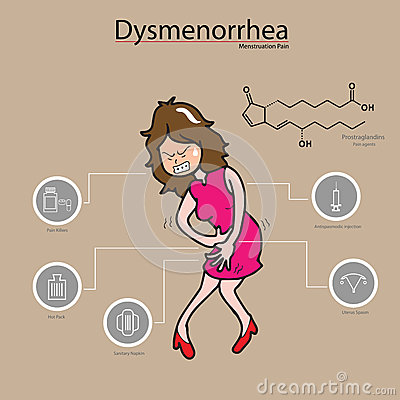
Dysmenorrhea can be divided into primary dysmenorrhea and secondary dysmenorrhea. Primary dysmenorrhea is periodic menstrual pain but no organic disease, while secondary pain is often seen in endometriosis, myoma, pelvic inflammatory disease, adenomyosis, endometrial polyps, and obstruction of menstrual outflow tract. Therefore, secondary pain is often accompanied by other gynecological symptoms, such as difficulty in sexual intercourse, dysuria, abnormal bleeding, uterine leiomyoma or infertility.
When the endometrium falls off during menstruation, endometrial cells release prostaglandins. Prostaglandin stimulates myometrial contraction and ischemia. The more severe dysmenorrhea, the higher the prostaglandin level in menstrual blood and peak in the first two days of menstruation. Prostaglandin release is also seen in secondary dysmenorrhea, and its level varies from organic lesions in the pelvic cavity.
sanitary napkin sanitary padsanitary pad organic cotton santiary pad
Primary dysmenorrhea is more common after menstruation than secondary dysmenorrhea. The characteristics of pain are no different, the diagnosis of primary dysmenorrhea can only be made after excluding organic lesions. Primary dysmenorrhea is most common in women in their 20 to 30 years of age, and then decreases with age, while secondary dysmenorrhea increases gradually. The recent worldwide total reported incidence of dysmenorrhea was about 17-80%. Because of the different definitions and the different methods of investigation, it is difficult to get the true incidence of dysmenorrhea.
bladder pad adult diaper incontinence booster pad
Dysmenorrhea and ovulation cycle are also related, generally do not occur at menarche, but in late youth. 14–26% of adolescent women are unable to go to school or work due to dysmenorrhea. One frequent occurrence is that pain occurs on the first day of menstruation, usually at the beginning of menstruation; but others begin pain until the second day of menstruation. Pain is spastic, paroxysmal, severe face white, cold sweat, general weakness, cold limbs; nausea, vomiting, diarrhea and headache are more common.
sanitary napkin sanitary padsanitary pad organic cotton santiary pad bladder pad adult diaper incontinence booster pad
http://www.kimrox.com/cover-5.html